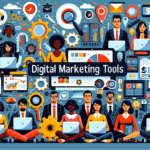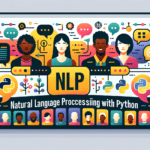The Internet of Things (IoT) has swiftly become a cornerstone of digital transformation, enabling a level of interconnectivity between devices, systems, and services that was once the stuff of science fiction. As businesses in every sector are racing to integrate IoT technologies, IT companies stand to benefit immensely from the myriad opportunities this revolution presents. However, they must also navigate a complex array of challenges to successfully capitalize on IoT’s potential. This blog post delves into both the opportunities and challenges that IT businesses face in the era of IoT integration.
Opportunities in IoT for IT Businesses
Expanding Market Potential
IoT opens a vast new marketplace for IT businesses. From smart home devices to industrial automation, the application areas for IoT are nearly limitless. Companies can develop new products or enhance existing ones with IoT capabilities, creating a diverse portfolio that appeals to a broader customer base.
Enhanced Data Insights
IoT devices generate an unprecedented amount of data. IT businesses can leverage this data to gain deeper insights into customer behavior, operational efficiency, and market trends. With advanced analytics, businesses can turn data into actionable intelligence, driving decision-making and innovation.
Improved Customer Experiences
IT businesses can use IoT to offer enhanced customer experiences. Smart products can provide personalized services, self-optimization, and predictive maintenance, increasing customer satisfaction and loyalty.
New Business Models and Revenue Streams
IoT enables the creation of new business models such as ‘Product as a Service’ (PaaS). For instance, instead of selling a piece of equipment, companies can sell the functionality it provides, coupled with a suite of services supported by IoT technology.
Efficiency Gains
IoT can streamline operations and reduce costs. Automated inventory tracking, smart energy management, and predictive maintenance are just a few examples where IoT can significantly boost operational efficiency.
Enhanced Collaboration and Innovation
IoT fosters an environment that encourages collaboration between different IT disciplines. This cross-pollination of ideas and expertise is a catalyst for innovation, pushing the boundaries of what IT businesses can offer.
Challenges in IoT Integration for IT Businesses
Security Concerns
As the number of IoT devices grows, so does the attack surface for cyber threats. Each connected device represents a potential entry point for hackers, making robust security measures critical. IT businesses must invest in secure IoT frameworks to protect data integrity and privacy.
Complexity of Integration
Integrating IoT into existing IT infrastructures can be complex. It involves a mix of legacy systems and modern technologies, which can lead to compatibility issues, requiring sophisticated solutions to ensure seamless integration.
Data Management and Privacy
Handling the sheer volume of data generated by IoT devices is a significant challenge. Businesses must build infrastructures capable of storing, processing, and analyzing large datasets while complying with data protection regulations.
Scalability Issues
As IoT solutions are adopted, the need for scalability becomes more pressing. IT businesses must design systems that can grow with demand without compromising performance or security.
Skills Gap
There is a growing skills gap in the IoT domain. As IoT technologies evolve, there is an increasing need for skilled professionals who can manage and innovate in this area. IT businesses must focus on training existing employees or recruiting new talent with the necessary expertise.
Reliability and Maintenance
Maintaining the reliability of IoT devices over time is challenging, especially as networks become more extensive and complex. IT businesses must develop strategies to monitor and maintain the health of IoT systems proactively.
Regulatory Compliance
IoT integration must align with industry standards and government regulations, which can vary greatly across regions and sectors. Navigating this regulatory landscape requires diligence and adaptability from IT businesses.
A Strategic Approach to IoT Integration
Building a Secure Foundation
Security must be the cornerstone of any IoT strategy. IT businesses should adopt a ‘Security by Design’ approach, where security measures are integrated into products and systems from the ground up.
Investing in Interoperability
To deal with the complexity of integration, IT businesses should focus on creating interoperable systems that can communicate with a range of devices and platforms, using standardized protocols and APIs.
Embracing Big Data Technologies
To manage data effectively, IT companies must embrace big data technologies, employing advanced data storage solutions, powerful analytics, and machine learning to extract meaningful insights.
Focusing on Scalability
Businesses should architect IoT solutions with scalability in mind, using cloud platforms and services that can dynamically adjust to changing loads.
Cultivating Talent
Investing in workforce development is essential. Businesses should provide ongoing training and seek partnerships with educational institutions to build a pipeline of skilled IoT professionals.
Ensuring Reliability
Developing robust monitoring and maintenance protocols is crucial. IoT systems should be designed for durability, with remote diagnostics and over-the-air (OTA) updates to ensure longevity and performance.
Keeping Abreast of Regulations
IT businesses must have a keen understanding of the regulatory environment surrounding IoT. Staying informed and agile will help companies quickly adapt to new regulations.
Conclusion
The integration of IoT presents a landscape rich with opportunities for IT businesses. It heralds a new era of connectivity, intelligence, and efficiency. However, these opportunities come hand in hand with significant challenges that require thoughtful and strategic responses. By addressing these challenges head-on, with a focus on security, interoperability, data management, scalability, skills development, reliability, and regulatory compliance, IT businesses can turn the potential of IoT into tangible success, positioning themselves at the forefront of this technological revolution.



